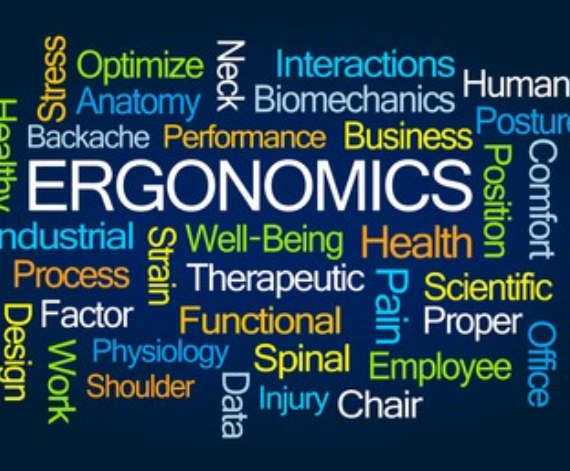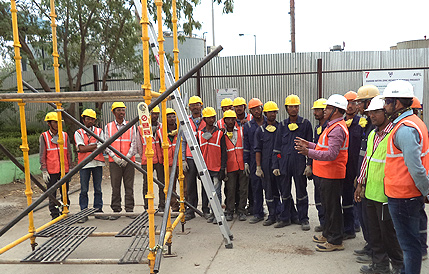Ergonomic Assessments: A Powerful Tool for Boosting Workplace Productivity

The Role of Industrial Hygiene Audits in Achieving Safe Workplaces
June 9, 2023
Why Every Business Owner Needs to Prioritize Fire Audits
June 9, 2023Ergonomic Assessments: A Powerful Tool for Boosting Workplace Productivity
In this article, we delve into the topic of ergonomic assessments and their power in boosting productivity in the workplace. Many businesses overlook the importance of the physical workspace and how it impacts their employees’ health and performance. By the end of this article, you will gain a clear understanding of how a simple assessment can improve workplace efficiency and employee satisfaction, ultimately resulting in higher productivity levels. Let’s begin. Introduction
Workplace productivity is one of the most important factors that determine the success of a business. However, many companies struggle to achieve optimal levels of productivity due to various reasons, including poor ergonomics.Fortunately, ergonomic assessments have emerged as a powerful tool for boosting workplace productivity by identifying potential hazards and suggesting changes that can improve safety and comfort levels in the workplace. In this article, we will discuss the importance of ergonomic assessments in improving workplace productivity, the benefits of investing in them, who should conduct them, and what happens when they are ignored
The Importance of Ergonomic Assessments:Workplace productivity is a major concern for modern organizations. One key factor that can significantly impact workplace productivity is employee comfort and wellbeing. That’s where ergonomic assessments come in. An ergonomic assessment involves evaluating the worker’s physical movements, work environment, and equipment to prevent musculoskeletal disorders (MSDs) and other injuries.
There are several key benefits to conducting ergonomic assessments. Firstly, it can help identify potential hazards and risks in the workplace that could lead to injuries. Secondly, it can improve employee safety by reducing the risk of MSDs and other types of injuries. Thirdly, it can lead to increased productivity by ensuring employees have comfortable workspaces with efficient equipment.
By investing in ergonomic assessments, organizations demonstrate their commitment to improving the overall health and wellbeing of their employees while simultaneously increasing workplace productivity.
Implementing Changes Resulting from Ergonomic Assessments:After conducting an ergonomic assessment, it is essential to implement necessary changes promptly. Failure to do so can lead to loss of productivity and increased risks of work-related injuries. Therefore, it’s crucial to develop a comprehensive action plan that outlines all the necessary steps required to implement the recommended changes.
The implementation process should start by communicating with the employees about the changes and how they will benefit from them. Employees should also undergo training on how to use new equipment or adjust their workstations. Training will ensure that everyone understands how the new changes will improve their working conditions.
Additionally, follow-up assessments should be conducted regularly to evaluate the effectiveness of the implemented changes continually. Feedback from employees can also be valuable in identifying areas that require further improvements or adjustments. The implementation of successful ergonomic assessments can result in increased productivity, better employee engagement, and improved job satisfaction levels.
The Benefits of Investing in Ergonomic Assessments:Ergonomic assessments can be a powerful tool for boosting workplace productivity by reducing injuries, improving worker satisfaction and decreasing absenteeism. By investing in ergonomic assessments, employers can create a safer and more comfortable work environment for their employees, which leads to increased productivity and job satisfaction.
In addition to preventing injuries, ergonomic assessments can help employees work more efficiently and comfortably, resulting in fewer breaks and less time off work due to injury or discomfort. By investing in ergonomic assessments, employers can save money on lost productivity due to injuries or absenteeism.
Furthermore, ergonomic assessments can lead to better employee morale and engagement. When workers feel that their employer cares about their health and well-being, they are more likely to be engaged and committed to their job. This results in better overall performance from the workforce as a whole. So it makes complete sense for employers to invest in ergonomic assessments that benefit both the employees’ health as well as the company’s bottom line.
Who Should Conduct Ergonomic Assessments?
Companies should consider hiring professionals or consultants that specialize in conducting ergonomic assessments. These experts have the knowledge and experience to identify potential hazards and areas of improvement within a workplace, ensuring that employees are working in a healthy and productive environment.Alternatively, larger organizations may choose to invest in an in-house ergonomics team. This team could be comprised of individuals with backgrounds in engineering, human resources, or occupational therapy. Having an internal team offers the advantage of increased flexibility and control over scheduling assessments.
Regardless of who conducts the assessment, it is important that they are trained and certified to identify ergonomic risk factors. Conducting regular assessments can help prevent work-related injuries and improve overall productivity by making sure employees are comfortable and safe at their workstations.
Risks of Ignoring Ergonomic Assessments
Ignoring ergonomic assessments can lead to numerous risks and consequences. One of the most significant risks is workplace injuries due to poor posture, repetitive motions, or using equipment that is not suited for the employee’s physical capabilities. These injuries can result in high healthcare costs and decreased productivity.Another risk of ignoring ergonomic assessments is the impact on employee morale and job satisfaction. Employees who are uncomfortable or in pain due to poor ergonomics may experience burnout, stress, and decreased motivation. This can lead to increased absenteeism and turnover rates, which ultimately affect the bottom line of a company.
In addition to these risks, companies that ignore ergonomic assessments may face legal repercussions if an employee files a complaint or lawsuit related to workplace injuries or discomfort. Investing in ergonomic assessments now can prevent these potential risks from becoming a reality and create a safer, more productive work environment for everyone involved.
Conclusion
In conclusion, investing in ergonomic assessments is a wise decision for any company looking to improve workplace productivity. With the implementation of simple changes based on assessment results, employees feel more comfortable and are able to perform their tasks more efficiently. Employers benefit from increased productivity, decreased injury rates, and improved employee morale. It’s a win-win situation that should not be ignored. By recognizing the importance of ergonomic assessments and making changes accordingly, companies can create a safer and happier work environment for all.
At TSM TheSafetyMaster Private Limited we offer following services
TSM TheSafetyMaster® Private Limited
Unit No 221-451-452, SPL1/J, 2nd & 4th Floor, Sunsquare Plaza Complex, RIICO Chowk, Bhiwadi 301019, Rajasthan, India
Phone: +91 1493 22 0093
Mobile: +91 7665231743/9413882016
Email: info@thesafetymaster.com




